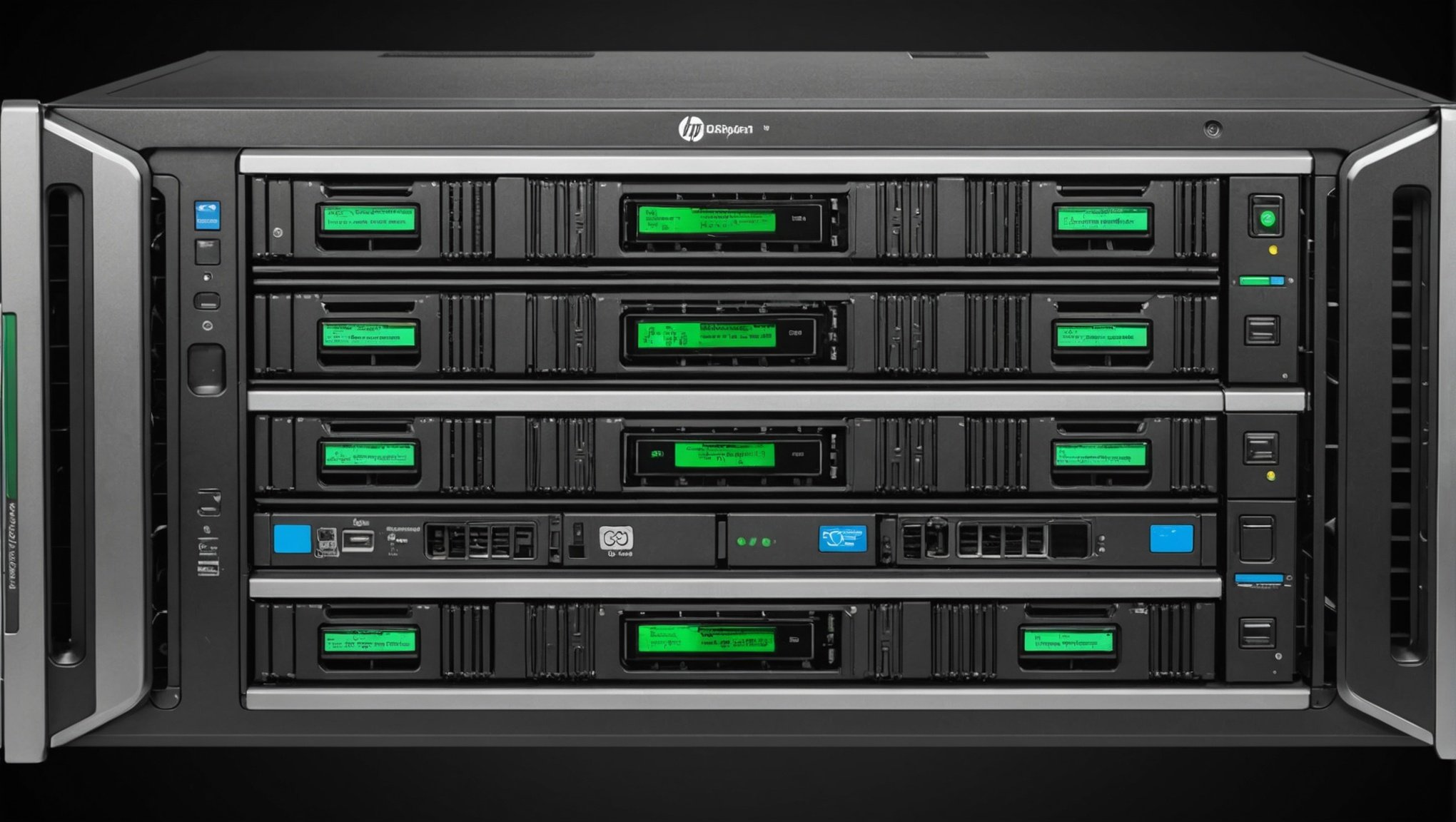As of September 8, 2024, organizations are increasingly turning to virtualized environments to run multiple isolated applications efficiently. The HP ProLiant DL380 Gen10 is a powerful and versatile server that can handle such demands with ease. This guide will take you through the steps required to set up a virtualized environment on this powerhouse, ensuring you maximize its potential while maintaining isolation and efficiency.
Before diving into the setup process, let’s understand why virtualization is essential and why the HP ProLiant DL380 Gen10 is a fitting choice.
In parallel : How do you optimize a Lenovo ThinkPad X1 Carbon for remote work with multiple external monitors?
Virtualization allows you to run multiple isolated applications on a single physical server. This not only optimizes resource utilization but also ensures that different applications do not interfere with each other. In a world where efficiency and security are paramount, virtualization is a go-to solution for many IT departments.
The HP ProLiant DL380 Gen10 is renowned for its robust performance, scalability, and reliability. It provides the perfect foundation for a virtualized environment thanks to its cutting-edge hardware and extensive software support. The server is designed to handle demanding workloads, making it ideal for running multiple virtual machines (VMs).
Also read : Essential Tips for Building a Secure Home Office Network with the Linksys MX5 Velop AX WiFi 6 System
Preparing the HP ProLiant DL380 Gen10 for Virtualization
The first step in setting up a virtualized environment is to prepare your HP ProLiant DL380 Gen10 server. This involves a few preliminary steps to ensure the server is ready for virtualization.
- Hardware Inspection: Begin by inspecting the hardware components of your HP ProLiant DL380 Gen10. Check for any hardware issues and ensure all components, including processors, memory, and storage, are functioning correctly. This server supports a variety of configurations, so ensure your setup meets the requirements for your virtualization needs.
- Firmware Updates: Keeping your server’s firmware up-to-date is crucial for optimal performance and security. Download the latest firmware updates from the HP website and apply them to your server. These updates often contain important fixes and enhancements that can improve the virtualization experience.
- BIOS Configuration: Access the server’s BIOS and configure settings to optimize for virtualization. Enable hardware virtualization features such as Intel VT-x or AMD-V, depending on your processor. Additionally, configure power management settings to ensure the server is running at maximum performance.
- Network Configuration: Configure the server’s network settings, including IP addresses and DNS settings. Ensure the server is connected to the network and has internet access for downloading software and patches.
- Storage Setup: Configure the storage subsystem to ensure sufficient capacity and performance. The HP ProLiant DL380 Gen10 supports various storage options, including SATA, SAS, and NVMe drives. Choose the storage configuration that best suits your virtualization requirements.
Installing the Hypervisor
With the hardware preparations complete, the next step is to install the hypervisor. The hypervisor is a critical component that allows you to create and manage virtual machines on your server. There are several hypervisor options available, but we will focus on two popular choices: VMware ESXi and Microsoft Hyper-V.
Installing VMware ESXi
VMware ESXi is a widely used hypervisor that offers robust virtualization capabilities.
- Download ESXi: Visit the VMware website and download the latest version of ESXi. Create a bootable USB drive with the ESXi installer.
- Boot from USB: Insert the bootable USB drive into the server and restart it. Access the server’s boot menu and select the USB drive as the boot device.
- Install ESXi: Follow the on-screen instructions to install ESXi. You’ll need to select the installation destination (typically the server’s storage device) and configure basic settings such as keyboard layout and root password.
- Initial Configuration: After the installation is complete, access the ESXi management interface via a web browser. Configure network settings, including IP address and DNS, to ensure the server is accessible on the network.
Installing Microsoft Hyper-V
Microsoft Hyper-V is another popular hypervisor that integrates seamlessly with Windows Server environments.
- Install Windows Server: Begin by installing Windows Server on your HP ProLiant DL380 Gen10. Ensure the server is up-to-date with the latest patches and updates.
- Enable Hyper-V Role: Open the Server Manager and add the Hyper-V role to your Windows Server installation. Follow the prompts to configure the Hyper-V settings, including the creation of virtual switches.
- Initial Configuration: Once the Hyper-V role is installed, access the Hyper-V Manager and configure network settings, including IP address and DNS. Ensure the server is accessible on the network.
Creating and Configuring Virtual Machines
With the hypervisor installed and configured, you can now create and configure virtual machines (VMs) to host your isolated applications.
Creating Virtual Machines
- Access Hypervisor Management Interface: Use the management interface of your chosen hypervisor (vSphere for ESXi or Hyper-V Manager for Hyper-V) to create new virtual machines.
- Specify VM Settings: Provide details for the new VM, including name, guest operating system, and resource allocation (CPU, memory, and storage). Ensure you allocate resources based on the requirements of the applications you plan to run.
- Install Guest Operating System: Mount the installation media for the guest operating system and follow the installation prompts. Configure the guest operating system with the necessary settings, including network configuration and updates.
Configuring Virtual Machines
- Install Virtualization Tools: Install the hypervisor’s virtualization tools (VMware Tools for ESXi or Integration Services for Hyper-V) within the guest operating system. These tools enhance performance and provide additional features such as improved network and storage performance.
- Network Configuration: Configure network settings for each VM, ensuring they can communicate with each other and with external networks. Create virtual switches and assign VMs to the appropriate networks.
- Resource Management: Monitor the resource utilization of each VM and adjust resource allocation as needed. Ensure that critical applications have sufficient resources while avoiding overallocation that could impact performance.
Securing and Maintaining the Virtualized Environment
Setting up a virtualized environment is not a one-time task; it requires ongoing security and maintenance to ensure optimal performance and reliability.
Security Measures
- Patch Management: Regularly apply patches and updates to both the hypervisor and guest operating systems. This ensures that vulnerabilities are addressed promptly.
- Access Controls: Implement strict access controls to limit who can access the hypervisor management interface and the VMs. Use strong passwords and multi-factor authentication to enhance security.
- Network Security: Configure firewalls and network segmentation to isolate VMs and protect them from external threats. Use network security tools to monitor and detect unusual activity.
Maintenance Best Practices
- Regular Backups: Implement a robust backup strategy to ensure that VMs and their data are regularly backed up. This will help you recover quickly in the event of a failure or data loss.
- Performance Monitoring: Continuously monitor the performance of the hypervisor and VMs. Use performance monitoring tools to identify and address bottlenecks and resource constraints.
- Resource Optimization: Periodically review resource allocation and optimize it based on changing workloads. Use features such as dynamic resource allocation and load balancing to ensure efficient resource utilization.
- Documentation and Procedures: Maintain comprehensive documentation of your virtualized environment, including system configurations, procedures, and troubleshooting steps. This documentation will be invaluable for troubleshooting and future upgrades.
Setting up a virtualized environment on an HP ProLiant DL380 Gen10 to run multiple isolated applications involves a series of well-defined steps. From preparing the hardware and installing the hypervisor to creating and configuring virtual machines, each step plays a crucial role in ensuring a robust and efficient virtualized environment. Regular security measures and maintenance practices are essential to sustain optimal performance and reliability. By following this guide, you can leverage the power of virtualization to maximize the potential of your HP ProLiant DL380 Gen10, providing a solid foundation for running multiple isolated applications efficiently.






